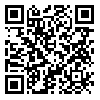BibTeX | RIS | EndNote | Medlars | ProCite | Reference Manager | RefWorks
Send citation to:
URL: http://jdisabilstud.org/article-1-461-fa.html

 ، محمد بلوچی انارکی1
، محمد بلوچی انارکی1 
 ، سمیه رضایی2
، سمیه رضایی2 
 ، عاطفه ملاجعفری2
، عاطفه ملاجعفری2 

2- دانشگاه یزد
زمینه و هدف: بشر در طول تاریخ علاقه و توجه زیادی به قصه داشته است، به همین دلیل قصه یکی از ابزارهای مهم اصلاح رفتار بهخصوص در کودکان محسوب میشود. قصهگویی بهعنوان روشی غیرمستقیم برای بیان اضطرابها، دلواپسیها و آنچه که در دنیای کودک میگذرد، میتواند در سلامت کودکان نقش مؤثری ایفا کند. پژوهش حاضر، با هدف اثربخشی راهبرد قصهدرمانی بر کاهش خطاهای املایی دانشآموزان با اختلال نوشتن در پایهٔ اول و دوم ابتدایی شهر یزد صورت گرفت.
روشبررسی: روش این پژوهش، از نوع آزمایشی بوده و جامعهٔ آماری را تمامی دانشآموزان مبتلا به اختلال نوشتن در شهر یزد تشکیل میدادند. تعداد ۲۰ دانشآموز دختر دارای اختلال نوشتن، پس از اجرای آزمون تشخیصی (آزمون هوش ریون کودکان، آزمون اختلال نوشتن فلاح چای و آزمون املای تصویری) بهشیوهٔ نمونهگیری خوشهای چندمرحلهای و بهطور تصادفی انتخاب شدند؛ سپس با گمارش تصادفی، در دو گروه آزمایش و کنترل قرار گرفتند. آزمودنیهای گروه آزمایش ۱۲ جلسه (هر جلسه بهمدت ۶۰ دقیقه و دو بار در هفته)، تحت آموزش راهبرد قصهدرمانی بودند، اما گروه کنترل، هیچ مداخلهای دریافت نکرد. دادههای بهدستآمده، با استفاده از روش آماری تحلیل واریانس با اندازهگیری مکرر، تجزیهوتحلیل شد.
یافتهها: با استفاده از آنالیز واریانس برای اندازههای تکراری مشاهده شد که راهبرد قصهدرمانی باعث شده است که تعداد خطاهای املایی در گروه آزمایش از عدد ۱۱٫۲۲ (در پیشآزمون) به عدد ۴٫۱۱ (در پسآزمون) و سپس به عدد ۳٫۰۱ (در پیگیری) کاهشیابد (۰٫۰۰۱>p)؛ اما در گروه کنترل این تفاوت معنادار نبود.
نتیجهگیری: براساس یافتهها میتوان نتیجه گرفت که راهبرد قصهدرمانی سبب کاهش خطای املای دانشآموزان با اختلال نوشتن شده است. همچنین آموزش این کودکان بهوسیلهٔ قصه، منجربه بهبودی در برنامهریزی در سطح تفکر اجرایی، کنترل پاسخهای آنی صادرشده از طرف مغز، زمانبندی، انگیزه و آغازگری در انجام تکالیف و درنتیجه سبب کاهش غلطهای املایی آنها شد. برمبنای نتایج این پژوهش، میتوان به مربیان اختلالهای یادگیری، مشاوران و روانشناسان پیشنهاد کرد که با استفاده از این راهبرد برای عملکرد نوشتن دانشآموزان دارای اختلال نوشتن اقدام کنند.
| بازنشر اطلاعات | |
 |
این مقاله تحت شرایط Creative Commons Attribution-NonCommercial 4.0 International License قابل بازنشر است. |



